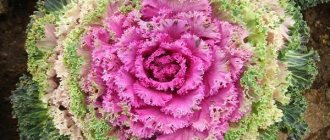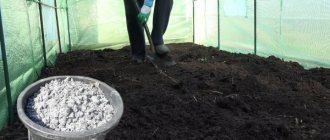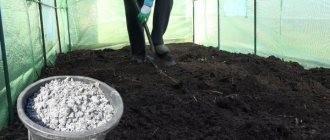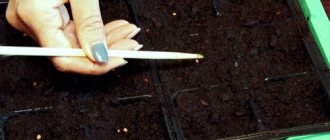Benefits of growing raspberries in a greenhouse
When growing raspberries in a greenhouse under certain conditions and with proper care, you can get abundant harvests all year round.
- Cultivation in this way has several advantages:
- reliable protection of plants from adverse weather;
- reducing the risk of damage to berries and plants by harmful insects and diseases;
- the opportunity to have fresh and healthy berries on the table all year round;
- increase in harvest volumes;
- improving the taste of berries;
- possibility of growing different varieties;
- no need to cut out the shoots and make a garter;
- implementation of simple, non-labor-intensive care.
Did you know? Raspberry fruits are not only red, but also black, pink, yellow, orange and purple. The latter variety appeared from a natural crossing of black and red bushes in the wild in North America.
Garden or remontant raspberries. Which one to choose?
Regular garden raspberries can be grown in a greenhouse. This will give it a number of advantages compared to those grown in open ground:
- large harvest of berries;
- very tasty berries;
- no difficulties in planning the stages of cultivation;
- can be protected from pests.
Garden raspberries growing in a greenhouse have a number of disadvantages:
- does not bear fruit for long, the berries must be picked quickly;
- you have to wait a long time for the harvest;
- raspberries require gartering, pruning, and installation of trellises;
- large bushes take up a lot of space;
- Long cooling is required for initiation of fruit buds.
Remontant raspberries for greenhouses also have a number of positive and negative aspects.
Its advantages include:
- the harvest can take a long time to harvest;
- a full-fledged abundant harvest ripens quickly;
- bushes do not take up much space and their number is large even in a small greenhouse.
Among the disadvantages of remontant raspberries are the following:
- one bush produces fewer berries than a regular raspberry bush;
- it is necessary to ensure that insects fly into the greenhouse and pollinate the plants;
- the taste of the berries is less rich and the aroma is not as fragrant;
- special requirements for the soil: the soil should be loose, nutritious, monitor acidity;
- There are no stepsons or side shoots, so it is difficult to propagate such varieties.
Suitable varieties
For greenhouse cultivation, high-yielding early frost-resistant remontant varieties that are capable of bearing fruit twice a season are best suited.
These include, in particular:
- Polana. Variety of Polish selection. Polana bushes are not too tall - up to 1.5 m, with strong shoots and a small number of thorns. The first wave of fruiting occurs in July, the second - from mid-August to early November. Productivity in open ground conditions is 5–6 kg/1 bush. The berries are formed of medium size, weighing 2.6–5 g. They are conical in shape and red in color. Their taste is sweet and sour with a predominance of acid.
- Atlant. The bushes of this variety are not too tall - they reach 1.6–2 m. At the same time, they are distinguished by their compactness and strong shoots. The studliness is average. The variety is characterized by strong immunity, endurance, and good adaptive abilities in any growing area. Atlant's berries are large and heavy - they weigh 5-10 g. Their shape is elongated, their color is red, and their taste is sweet. They hang on the branches for a long time without falling off. They tolerate transportation well. The yield from one bush is high - about 5 kg.
- Ruby necklace. This plant is medium-sized, usually does not exceed 1.5 m in height. During fruiting, which occurs in the mid-early period - in mid-August, elongated scarlet berries are formed, 4-8 g each. Their taste is sweet and sour. The average yield of the variety when grown in an open area is 2.8 kg per bush.
- Heritage. This remontant variety is considered one of the best for commercial activities. It has a number of positive characteristics, including high productivity, ease of care, tasty berries and their universal purpose. Heritage raspberry bushes are low, compact, with medium thorniness. The fruits are medium in size, weighing 3–3.7 g, in the form of domes, dark red in color. Their taste is sweet, with a subtle sourness. The first berries appear on the branches in June. The productivity of one bush is 3.5–5 kg.
- Yaroslavna. The maximum height of the bushes is 1.5 m; they are compact and weakly branched. The first harvest appears in early June, the next one in August. Productivity of the variety is 4 kg per plant. The berries are formed large - 7-10 g each, yellow in color, sweet with a slight sour taste.
- Morning dew. Another variety with attractive yellow berries. Its fruits are large - up to 8 g in weight, round in shape. They are distinguished by their density, due to which they are easily transported and stored for a long time. The berries appear in August. The variety is characterized by a high level of frost resistance, increased productivity, and unpretentiousness.
Popular varieties for greenhouse raspberries
It is advisable to grow only remontant raspberry varieties in a greenhouse. Among them, the following are especially popular due to their fertility and ease of care:
- “Hercules” is a plant with erect shoots that bears fruit abundantly with large berries;
- “Diamond” - is a spreading bush, bears fruit for a long time and abundantly;
- "Polana" - begins to bear fruit very early, easy to grow;
- "Autumn Beauty" is a small shrub. The berries ripen by early autumn, the total weight of the crop is about 5-7 kg;
- “Himbo-Top” - distinguished by rather large and dense fruits that have a longer shelf life;
- “Golden Domes”, “Yaroslavna”, “Orange Miracle”, “Morning Dew” are attractive and productive yellow-fruited varieties.
Not all varieties that grow successfully in open ground do well in greenhouses. Therefore, when choosing planting material, you should not take the first seedlings you come across, praised by the seller. First, it is better to consult with people with experience who will tell you where and which varieties are best to purchase.
The most reliable way to make a successful purchase is a trip to a specialized nursery. There, workers are engaged in growing healthy and strong seedlings with pure varietal characteristics. Planting material must be of the highest quality, always virus-free, because a good result from the efforts you expend depends on this.
Raspberry seedlings for sale
Greenhouse selection criteria
A summer greenhouse is suitable for growing homemade raspberries until November. For winter, plants are pruned and insulated.
Important! It is necessary to purchase seeds of the variety or seedlings for the greenhouse in specialized stores or well-established nurseries. When buying planting material from hand, there is no guarantee that it is healthy and is the exact variety that is needed.
For year-round cultivation of raspberries, you need a well-insulated and heated greenhouse structure with an equipped queen cell. Its design must be reliable in order to withstand adverse weather conditions and snow cover.
Assembly rules and equipment
A proper greenhouse structure must be built in accordance with the following rules:
- A reliable foundation with a height of at least 10–15 cm is required.
- The frame must be made of galvanized profile, since it is this material that can serve for a long time and reliably.
- It is best that the roof in the greenhouse be pitched or arched.
- The optimal coating is polycarbonate, tempered glass or plastic.
- To maintain the desired temperature during the cold season, it is necessary to equip the greenhouse with a heating system.
- It is important to install proper lighting along the entire length of the greenhouse shelter, which will become an additional source of light during short daylight hours.
- To prevent the penetration of cold air and drafts, it is advisable to install a vestibule and a double door.
Wooden slats and ordinary glass are not suitable for the construction of a winter greenhouse. These materials are not able to provide the proper level of heat, and this threatens the raspberry bushes with freezing.
Rules and features of greenhouse assembly
All-season greenhouse for growing raspberries.
To grow raspberries year-round, you need to build a reliable arched or pitched greenhouse. It must be built on a good foundation.
- The greenhouse must be equipped with a double door and a vestibule . This will prevent cold air from entering the middle.
- Remontant raspberry bushes are low, so you should not make the greenhouse too high .
- In order for the structure to last for a long time, it is advised to make it only from high-quality and reliable materials. For the frame you should choose a galvanized metal profile. Ideal as a cover tempered glass or polycarbonate.
At the moment, polycarbonate greenhouses are the best choice.
- Important point! Under no circumstances should you use ordinary glass for a winter greenhouse , as it can allow cold to pass through.
- The greenhouse must have good lighting . As a rule, it is placed around the perimeter.
- For heating, infrared heaters or wood-burning stoves are used . Moreover, the last option is the most economical. For 50 square meters, only two ovens are enough.
Territory organization
The greenhouse should be located in an open area. Shadows from tall plants and buildings should not fall on it. In order for the raspberry bushes to receive enough light throughout the day, the greenhouse shelter must be positioned lengthwise from east to west.
It is important to choose a place that is protected from the winds. Raspberries will react poorly to drafts. The area must be cleared of plants and stones, dug up and leveled with a rake, then the required communications must be brought to it. It is important to organize a good passage to the greenhouse in order to care for the plants without any problems. To remove excess moisture from the greenhouse, small grooves should be dug if necessary.
How to register a business?
Strictly speaking, growing raspberries in the country does not require SPD registration. Even the owner of a personal plot of up to 2.5 hectares has the right to sell berries as farm surplus. However, such a plantation can produce three dozen tons of harvest per season, which is difficult for a private individual to sell in a short time. To solve this problem, you should create an individual entrepreneur or peasant farm with the following activity codes:
OKVED for growing raspberries
| 01.25 | Growing other fruit trees, shrubs and nuts |
| 01.25.1 | Growing other fruit and berry crops |
The law classifies such types of business as growing corn, berries, vegetables and fruits as agriculture. Accordingly, farmers are allowed to use the most favorable taxation scheme - Unified Agricultural Tax with a rate of 6% of net profit.
To sell raspberries to other enterprises, it is also necessary to obtain some documents indicating the safety and high quality of the berries - a declaration of conformity and a phytosanitary inspection report. The issuance of the former is carried out by certification centers, and the latter by the Rosselkhoznadzor department.
Planting technique
When growing raspberries all year round, conveyor planting is most often used. With this technology, the first seedlings are planted in January. They bear fruit in March–April. At the beginning of spring, the second stage of seedlings is planted, and the plants that bear fruit are pruned so that they go into a dormant state.
Bushes for renewal can be grown independently in a specially equipped queen cell. In addition to cultivation in soil, horizontal and vertical methods are used in containers and bags. The containers are placed on racks built into several tiers in the greenhouse. The bags are hung horizontally, holes are made in them and filled with nutrient soil.
When to plant raspberry seedlings in the fall?
The exact timing of planting raspberries before winter is not easy to determine, but the main principle is that there should be no more than three weeks before the onset of stable sub-zero cold weather. The dates of the lunar calendar for those who like to follow it offer the following dates in September 2019:
- favorable days for planting raspberry seedlings in the fall - 1-4, 7-9, 17-19;
- unfavorable days for planting raspberry seedlings in the fall are 10, 11, 14, 20-22, 25, 28.
Timing for planting raspberries before winter in different regions
In central Russia and the Volga region, raspberries are planted before winter in September-October. In Siberia, the Urals and the northern regions, these dates occur within the end of August - beginning of September. In the southern regions, the period for autumn planting of raspberries can be extended from September-October to the second half of November.
For your information! If cool and rainy weather sets in in your climate zone already in August, then planting raspberries in such conditions can lead to fungal infections of the planting material and its complete loss. In this case, it makes sense to plant young raspberries in the spring.
Growing scheme
In order to successfully grow raspberry bushes, it is necessary to prepare the soil for planting, as well as adhere to recommendations for watering and fertilizing regimes, duration of lighting and heating.
Soil preparation
If the greenhouse is being used for the first time, then you need to lay a layer of garden soil mixed with peat, sand or vermiculite in it. You can feed it with humus and complex mineral fertilizer.
Disinfection must be carried out - watering with boiling water or a solution of potassium permanganate. When reusing the greenhouse, all the soil or the top 5–10 cm layer must be renewed or mixed with compost (rotted manure) and dug up.
Lighting
Raspberries are day-neutral plants. This means that it is able to develop and bloom regardless of the length of day and night. But in order for the berries to ripen on time, to be tasty and sweet, it is necessary that the bushes are illuminated for at least 12 hours.
In the cold season, additional lighting is definitely needed. The period of night rest in plants should last at least 6 hours. 24/7 lighting is not needed. The highest yields can be achieved by setting the light level to 12–20 klx.
Watering and fertilizing system
It’s good if the watering is organized by drip. It is also good to apply fertilizer under the bushes using a drip system.
Heating
Turning on the heating of the greenhouse will depend on climatic and weather conditions. It is usually turned on at the end of September - beginning of October.
Raspberries in autumn - planting raspberries before winter
Most likely, seedlings of almost all types will take root, but for complete success, it is advisable to take into account the following agrotechnical points:
- Prefer winter-hardy varieties, since those more sensitive to frost can suffer significantly or die completely - they are naturally propagated in the spring;
- Favorable weather conditions are more important for the central and northern regions, but in the south of Russia and in areas with a temperate climate, where autumn planting of raspberries before winter is most used, there are almost no problems with the weather;
- We are in a hurry to try raspberries in the coming season, since spring planting can promise it only next summer, that is, in a year.
Harvesting and growing seedlings
Raspberry seeds can be purchased at the store or prepared yourself. To do this, you need to collect overripe berries without damage or pests, squeeze the juice out of them using gauze. The squeezed mixture should be placed in a glass of water. Remove any seeds that float to the bottom, squeeze out and dry those that have sunk to the bottom. Germinate the seeds on damp gauze for several days.
For sowing, you need to prepare a soil substrate consisting of peat, garden soil and sand. It must be disinfected by calcining it in the oven or microwave, pouring boiling water, potassium permanganate, or keeping it over steam.
Seeds can be grown in one long container 15 cm deep or in separate small containers. The depth of embedment in the ground is 0.5 cm.
After planting, the crops should be moistened with a spray bottle and placed on a bright windowsill, shaded from direct sunlight. They need to be watered twice a week, and fed with a weak urea solution once every 1.5–2 weeks.
You can move the sprouts into the greenhouse when they have 2–4 true leaves.
Did you know? The record holder for producing the largest fruits is the raspberry variety Ispolin. With high-quality care and in favorable conditions, its bushes are strewn with 15–25 g of berries.
How to sell raspberries?
Organization of sales is the main problem of growing raspberries as a business. In an ideal situation, the berries should go straight from the field to the buyer. Therefore, the farmer will have to make significant efforts to build a distribution network. There are several ways to sell berries:
- Agricultural markets. To sell two or three hundred kilograms of berries a day, you will have to install distributors in all city markets. They can be hired among older people who are looking for how to make money as pensioners in Russia;
- Catering establishments. Cafes and restaurants that have desserts made from fresh or frozen strawberries on their menu can be provided with regular supplies of berries. Most likely, each establishment will buy 5-6 kg per week, but in large cities there are hundreds;
- Wholesale intermediaries. By engaging in a business such as growing greens in a greenhouse, growing raspberries or strawberries, you can sell the entire harvest to resellers at once. Unfortunately, their purchase price will be minimal;
- Grocery stores. To sell raspberries through retail outlets, you need to first agree with their owners and build a distribution system. Berries must be supplied in blisters of 250–300 g;
- Processing companies. A farmer should look for nearby enterprises that produce jams and juices, desserts and baked goods. But you will have to store the berries on your own territory, since such clients do not have warehouses;
- Pharmacological enterprises. A business plan for growing raspberries may include selling not only fresh berries, but also dried leaves, flowers and plant shoots. Such raw materials are widely used in medicine.
Planting: step-by-step instructions
The day before planting the seedlings, the containers should be moistened generously. In the greenhouse it is necessary to make trenches with holes at a distance of 15 cm from each other. Then plant seedlings in them without destroying the earthen clod. Fill the holes with soil, lightly compact them, moisten and mulch with sawdust.
If already grown seedlings are planted, then planting should be done as follows:
- Dig trenches 40 cm deep, 50 cm wide at a distance of 2 m from each other.
- Make holes in the trenches at a distance of 60 cm.
- Place a seedling in each hole, positioning them so that the root collar is at ground level.
- Fill the holes with soil.
- Lightly compact the soil.
- Water each plant thoroughly.
How to plant raspberries - methods of planting raspberry seedlings
Raspberries are planted in three ways: strip, bush and trench. For planting on a garden or personal plot, it is more advisable to use the bush or trench method, although there are supporters of strip planting - we’ll tell you about that too.
With any planting method, the most important condition is the correct distance between the bushes (80-100 centimeters) and the rows (interval of at least 1.5 meters). Ribbon planting saves intervals between bushes - up to 40-50 centimeters between them, but makes up for it at a longer interval between rows - at least 2 meters. The indicated intervals allow for convenient care, full development of bushes, and fruiting of raspberries.
Bush method of planting raspberries
This method is good in all respects, but especially for regions with a humid climate, because a large interval between bushes creates favorable conditions for planting ventilation and helps plants resist fungal infection. Let us add that with this method of growing raspberries, preliminary fertilization of the planting site is not required.
To successfully plant raspberry seedlings before winter, the following steps will be required:
- planting holes, 40 centimeters deep, 30 centimeters in diameter, dig 2 weeks before planting the seedlings;
- pour 5 kilograms of organic fertilizers into the bottom of the prepared holes;
- prepare a nutrient substrate from half of the soil dug from the hole, 20 grams of superphosphate, 10 grams of potassium sulfate, or instead - the volume of a half-liter jar of ash;
- Fill the hole halfway with the prepared mixture;
- When planting, the seedling is installed so that its root collar is at the level of the finally laid soil;
- straighten the roots of the seedling evenly and carefully;
- holding the seedling in an upright position and shaking it slightly to avoid voids, cover it with fertile soil;
- upon completion of filling the hole with the seedling, it is easy to compact the soil and make a watering hole;
- pour 5 liters of water under each seedling;
- if necessary, trim excess shoots;
- Mulch the watering area to avoid cracks when the moisture dries out.
Tape method of planting raspberries
This method of planting raspberries is more labor-intensive and is used when growing raspberries in large areas and is carried out in this way:
- dig a ditch about 50 centimeters wide and 40 centimeters deep;
- the volume of excavated soil is combined per 1 square meter with 3 kilograms of humus, 30 grams of superphosphate and 20 grams of potassium salt;
- the interval between seedlings when planting them is determined by the height and spreading of adult bushes: for compact ones the usual is 50-60 centimeters, and for tall ones - up to 1 meter;
- When planting, the seedlings are placed in a ditch with their roots straightened down and covered with fertile soil, leaving the root collar at ground level.
With the tape method, planting raspberries can be single-row or double-row. The scheme for planting bushes is the same as with the single-row method, but the double-row method requires an interval between a pair of rows of 60-80 centimeters, which saves planting area.
Trench method of planting raspberries
At the bottom of the planting trench there is a nutrient layer, which for a long time is the source of life for raspberry bushes, while also being a source of heat. Trench planting is done in the following way.
- the trench should be 60 centimeters deep and 50 centimeters wide;
- in case of heavy soil, cover the bottom of the trench with a 15-centimeter drainage layer composed of sand and gravel;
- the next layer - nutritious - consists of healthy branches, fallen leaves, hay, greenery;
- sprinkle sawdust on top, a nutrient substrate - a mixture of soil, mineral fertilizers and humus in the proportions specified for the strip method of planting raspberries;
- Place raspberry seedlings in a filled trench and root them in the same way as with the tape method.
Caring for the plantation before fruiting
Caring for raspberries in a greenhouse involves the following procedures:
- watering;
- feeding;
- bush formation;
- loosening;
- mulching;
- preventive treatments against diseases and harmful insects.
In the year of fruiting
The formation of a bush is very important for raspberries, as it allows you to establish normal air circulation in the beds and achieve uniform lighting. In the first year after planting, the stems are shortened to a living bud - this allows stimulating the growth of side shoots.
Removing shoots
To obtain high-quality fruits in large quantities, it is important to standardize the shoots. No more than 6–7 branches should be left on one bush. The rest should be cut off with pruning shears.
In the future, constant removal of those branches that have already bear fruit is required. This must be done immediately after harvesting. They should be replaced by the same number of only the strongest young shoots.
The second method of thinning shoots
There is another way to trim branches - double pruning. The bushes should be divided into 3 groups. For plants from the 1st group, cut off the tops, from the 2nd group - cut off all shoots by a third, from the 3rd group - cut off the bush completely, leaving 10-15 cm above the ground. The bushes with the tops cut off will be the first to produce berries. The second harvest will be from plants with shortened shoots. Completely cut bushes will be the last to begin bearing fruit.
Caring for planted raspberries before winter
Raspberry seedlings are watered at the above rate using a watering circle, followed by protective mulching with peat, rotted sawdust, hay, excluding fallen leaves, which can become a source of fungal infection and pests. It would be useful to preventively treat the soil against fungal infection with copper sulfate.
Further watering should be carried out as necessary, subject to warm and dry weather, without waterlogging, which can cause rotting of the plant root system. Lack of moisture can lead to freezing of raspberry bushes, to diseases and instability to pests. As a result, the expected high-quality raspberry harvest will be lost.
Raspberry bushes planted in autumn that have successfully survived the winter, with subsequent proper regular renewal of the raspberry tree and care in spring and summer, will delight gardeners with fruiting in July and August. For spring planting - only next season.
For your information! Varieties of remontant raspberries: Gusar, Polana, Polka and others - are prepared for planting and planted according to general rules. But the depth and diameter of the planting hole is made several centimeters larger.
An important stage in the preparation of raspberries planted before winter, especially in cold regions, is their dense mulching, in which the mulch layer should be at least 15 centimeters thick. In addition, if a severe winter is forecast, it is advisable to use covering methods: cover with spruce paws, cover with covering material, and if there is snow cover, throw snow over the planting of raspberry bushes.
Watering and fertilizing raspberries
Raspberries require moderate watering. The optimal frequency is 2 times a week. It is important to ensure that there is no stagnation of moisture, which has a detrimental effect on the plants.
To improve the moisture and air permeability of the soil, it must be loosened once a week. will help maintain the required level of moisture .
The best option for fertilizing plants is alternating organic solutions (compost, bird droppings) and mineral mixtures (urea, superphosphate, ammonium nitrate) . They need to be applied once every 2 weeks.
During the active growing season, the plant must be fed with nitrogen before flowering, and with phosphorus and potassium during the fruiting period.
Important! Fertilizers should be applied only to well-moistened soil. Fertilizers applied to dry soil cause burns of the root system.
Why grow raspberries?
Raspberry is a perennial subshrub, reaching a height of 1.6–2 m. The crop develops in a two-year cycle: in the first year, young shoots grow, which remain for the winter. In the second year they become woody, covered with flowers, bear fruit and die, and new growth takes their place.
The relevance of industrial cultivation of raspberries is explained by the excellent taste of its sweet berries and the benefits that the plant as a whole brings to people:
- The fruits are eaten fresh and frozen for the winter to compensate for the seasonal lack of vitamin products;
- Compotes, jellies, jelly and other drinks are made from raspberries. Berries are added to ice cream, processed into jams and confectionery fillings;
- Raspberry juice is used to color and flavor various drinks and desserts, sweets and marmalade;
- The berries, which have diaphoretic and antipyretic properties, are used to treat colds, bronchitis, rheumatism and hypertension;
- Dried raspberry leaves serve as a base for herbal tea. The berries are also added to regular tea mixtures for flavoring;
- Young shoots and leaves of raspberries help improve the functioning of the gastrointestinal tract, strengthen the walls of blood vessels, lower cholesterol levels and relieve inflammation;
- Raspberries are an excellent honey plant. According to various sources, from 60 to 200 kg of honey are collected per hectare of plantings.
Harvest and storage
Harvesting should be planned for the first half of the day. The day before the planned harvest, the bushes should not be moistened.
The berries are harvested by hand when they reach maturity, that is, they acquire the color and size declared by the originator. They are carefully removed, separating them from the stalk. For berries intended for transportation, the stalk is left, and the stalk is separated by cutting or pinching off.
In order for the berries to be stored longer and to tolerate transportation well, they must be placed in cold conditions within 40 minutes after picking.
The duration of storage will depend on the variety grown. Usually, in the refrigerator at a temperature of +8...+10°C, raspberries are suitable for consumption for 2-3 days. At a temperature of +4...+5°C, the shelf life is extended by another 3–4 days.
Business Features
Raspberries have adapted well to the Russian climate, so today they can be found in every dacha and on every personal plot.
However, many farmers limit their attempts to make money from growing it to planting a few dozen bushes and then selling a couple of hundred kilograms of fruit at a nearby market. This passivity is explained by the complexity of harvesting and storing the crop: all operations have to be carried out manually, and the berries lose their marketable appearance already on the second day. At the same time, with a site area of several hectares and the presence of distribution channels, such activities can bring in millions. Is it worth considering growing raspberries in a greenhouse all year round as a business? Of course, under artificial conditions it is realistic to get two harvests per season. But the bushes cannot be planted in several tiers, so it is impossible to collect more than 350 kg of berries from an area of 180–200 m². Such a farm will be profitable only if the farmer finds a cheap way to heat the greenhouse complex and is able to sell the crop in winter for at least 1,000 rubles per kilogram.
However, the raspberry business is attractive to beginners, regardless of the method of growing it. There are several reasons for this:
- Agricultural concerns are not yet engaged in the industrial cultivation of raspberries, and the farmer is not afraid of competition from private owners;
- Judging by the reviews, growing raspberries as a business does not require constant attention and additional investments;
- The plantation can be exploited for about ten years. During this time, the productivity of the bushes decreases slightly;
- Raspberry varieties for industrial cultivation produce up to 15 tons of fruit per hectare. Taking into account the cost of the berries, the profit is huge;
- Even if it was not possible to sell the crop quickly, the berries can always be dried, frozen or processed into semi-finished confectionery products.
Unfortunately, there are also factors that force you to look at this business from a different perspective. In particular:
- In the first year, growing raspberries in open ground brings modest profits. Productivity reaches the desired level only in the second or third year;
- The fruits need to be collected as quickly as possible, involving workers or expensive special equipment. This entails additional costs;
- The berries are stored for only a few days. If they do not reach the store the day after collection, they will have to be recycled.
Bush propagation
Raspberries can be propagated in several ways: by young green sprouts, root cuttings, root suckers, and seeds.
Green sprouts 7–10 cm long suitable for propagation are cut out in the summer with a knife or pruning shears, after which they are planted for rooting. First, they are placed in a root former for 12–15 hours, and then in the ground at a distance of 7–10 cm from each other. Plantings should be covered with film. The optimal temperature for growth and rooting is +22…+25°C. After a month, roots should appear. Then the cuttings can be transplanted to a permanent place of growth.
Root cuttings are harvested in spring or autumn, before or after the end of the growing season. Cuttings with a diameter of 2 cm are separated from the mother plant. They are also rooted in the ground. After 3–4 roots appear, the cuttings are planted in previously prepared holes; the earth ball is not destroyed during planting.
Root suckers already have their own roots, so replanting them is not difficult. They are dug up in the fall along with a lump of earth and transplanted to a prepared place.
Seed propagation, as a rule, is not used at home because it is troublesome and labor-intensive.
Where to grow raspberries?
To gain experience, a beginner can easily start growing raspberries in the open ground at the dacha. However, to produce berries on an industrial scale, you will need a plot of at least a couple of hectares. It is better to rent it, since the crop cannot grow in one place for longer than 8–10 years. How to find a suitable option:
- You should look for a place for a plantation closer to the city, so as not to waste time delivering perishable crops to buyers;
- The site must have convenient access roads and access to water. On two hectares of raspberry fields, 600 tons of moisture will have to be poured weekly;
- The area should be flat or with a slight slope of 2–3°. On too steep slopes, water drains without having time to penetrate the soil;
- The depth of groundwater must be at least 1.5 m. In too wet soil, the central roots of the bush will simply rot;
- It is desirable to have forest shelter belts that cover the field from the wind. This way you can protect plants from freezing or drying out;
- The site should be on the sunny side. With a lack of light, raspberries grow long shoots that shade the fruiting branches;
- Soil acidity should be in the range of pH5.6–6.2. If necessary, it can be reduced by adding gypsum, chalk or lime.
According to popular advice, growing and caring for raspberries will not be effective without some preparatory operations. So:
- On the eve of autumn, before planting, deep plowing of the soil is carried out, followed by treatment with broad-spectrum herbicides;
- For each square meter of plot, add 8–10 kg of manure, 25–30 g of potassium sulfate and 35–45 g of superphosphate. Then the soil is plowed to a depth of 30–35 cm;
- In early spring, after the snow melts, the area is cultivated with a harrow to a depth of 8–10 cm, and after weeds appear, it is cultivated or milled.
Diseases and pests
If errors are made during planting and care, or if the microclimate is incorrect, the greenhouse raspberry patch may become infected with diseases or harmful insects.
Raspberry bushes can be threatened by the following parasites:
- Raspberry beetle . This is an insect with an oval gray body, about 4 mm long. Beetle larvae pose a danger to raspberry leaves and buds. To prevent insects from entering the raspberry field, you should dig up the soil in a timely manner. In case of severe infection, treatments with Iskra and Fufanon .
- Aphid . Small black or green insects suck the juices out of the plant, causing them to stop growing and die. To destroy the parasite, use “Aktellik”, “Karbofos” , and to repel it - spray with a soap solution or a decoction of insecticidal herbs.
- Spider mite . One of the most dangerous pests for raspberries, as it can quickly lead to a reduction in yield by 30–40%. This is a miniature insect of black or red color. It feeds on the juices of the plant, leading to the appearance of dark spots on the foliage, its yellowing and falling off. To prevent the appearance of spider mites, it is necessary to maintain the desired level of humidity and temperature in the greenhouse. It should not be hot and dry. The pest is controlled by spraying with “Akarin”, “Fitoverm”, “Bitoxibacillin” , infusions of dandelion, onion, garlic, and tomato tops.
- Gall midge . A parasite that damages the bark of a plant. Its harmful activity leads to the formation of growths - galls - on the branches. You can prevent it from entering the raspberry field by digging and updating the soil, spraying with Actellik and Karbofos . The same drugs are used for treatment.
The most dangerous diseases for raspberries are:
- Anthracnose . The main symptom of this fungal disease is the appearance of brown spots on the leaves. For the prevention and treatment of the disease, treatments with copper sulfate and the preparations “Oxyhom” and “Acrobat MC” are used.
- Septoria (white spot) . When the pathogen spreads in the greenhouse, small dark spots appear on the leaves and stems, the center of which later becomes light. If treatment is not carried out, the leaves turn yellow and die. To prevent raspberries from getting sick, it is necessary to prevent the beds from being too crowded and an excess of nitrogen in the soil. For the purpose of prevention, spraying with Fitosporin .
- Verticillium wilt . The pathogen affects all plant organs of raspberries. As a result, white stripes appear on the stem and branches, the tips of the leaves die, and the plant wilts. The disease cannot be treated. To prevent it, it is advised not to overfeed the soil with nitrogen, not to allow moisture to stagnate, and to treat the soil before planting with Maxim, Fundazol, and Fitosporin .
- Curly . Main symptoms: stunting, thickening of shoots, wrinkling of leaves. Like all viral diseases, curliness cannot be cured. For the purpose of prevention, it is necessary to promptly combat aphids - the main carrier of the virus, select high-quality and healthy planting material, and carry out proper care.
- Mosaic . Another dangerous viral disease that cannot be treated. A sign of damage is light green spots on the leaves. You can save raspberries from mosaic infection if you fertilize in accordance with the recommendations, promptly combat pests that spread the virus, and immediately remove diseased bushes.
- Overgrowth, or "Witch's Broom" . Penetrating into a plant, a dangerous virus leads to the appearance of thin root shoots, shallowing of foliage, growth of the plant, and cessation of fruiting. As preventive measures, it is necessary to promptly destroy harmful insects and remove diseased bushes from the greenhouse.
So, growing raspberries in a greenhouse under protected soil conditions is a troublesome and expensive task. However, it has a number of advantages, one of which is profitability, since in autumn and winter fresh berries are quite expensive. And, of course, a delicacy will appear on the table for a long time - tasty and aromatic raspberries.
Who and what can harm raspberries?
Although the greenhouse largely protects plants from various pests, even here raspberries can be overtaken by pests such as raspberry beetle larvae, caterpillars and aphids, spider mites, raspberry mites, and fungal infections.
Among the diseases that may arise due to non-compliance with cultivation technology are the following: didimella or purple spot, anthracnose, septopia, verticillium wilt, bacterial measles cancer or goiter of the root system, curl, infectious chlorine or jaundice, mosaic, bushy dwarfism, overgrowth. Timely identification of diseases and pests and their control will help avoid epidemics.











